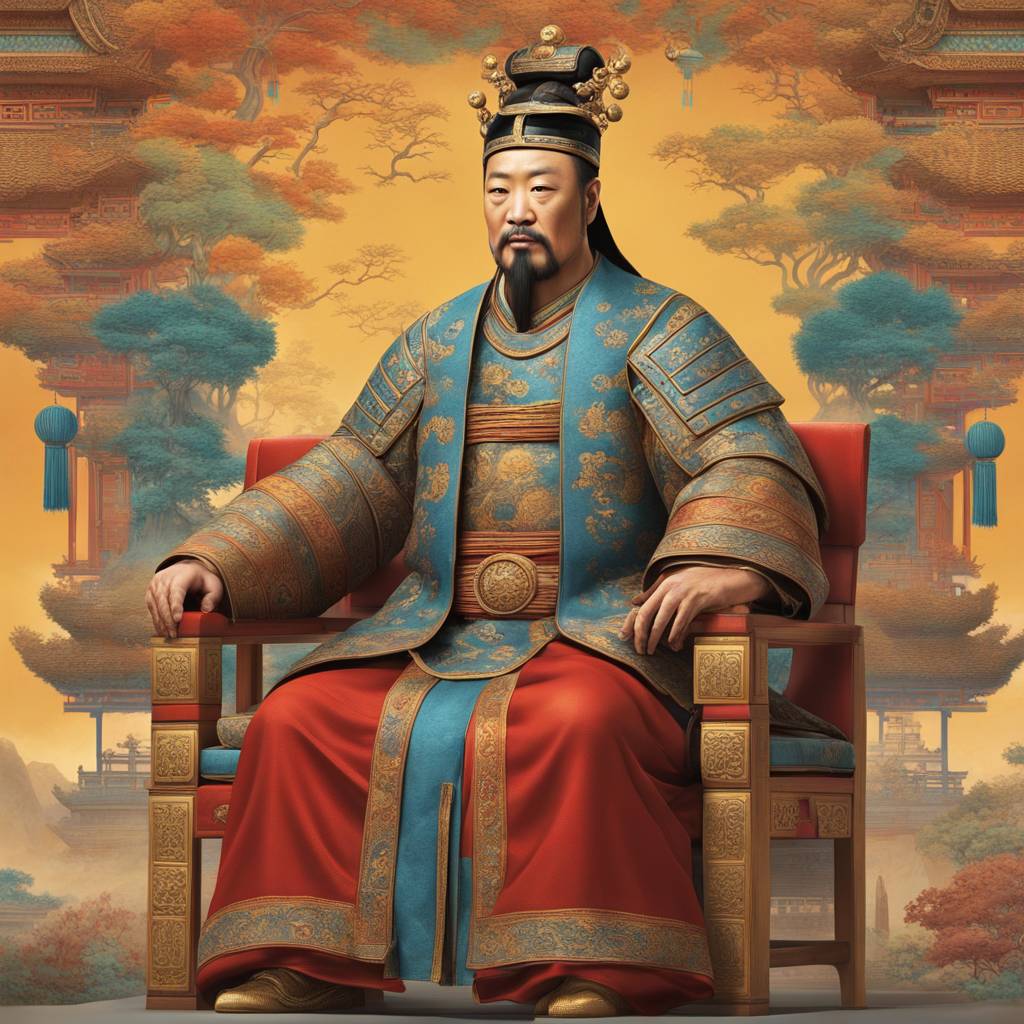The study focused on reconstructing the face of Chinese Emperor Wu of Northern Zhou, who ruled 1,500 years ago, using DNA extracted from his remains. The research, published in Current Biology, indicated that the emperor’s death at the age of 36 may have been linked to a stroke. This study not only sheds light on the health of the ancient emperor but also provides insight into the origin and migration patterns of the nomadic empire that he led in parts of northeastern Asia. Emperor Wu, ruler of the Northern Zhou dynasty, was known for his strong military and unification of the northern part of ancient China after defeating the Northern Qi dynasty during his reign from AD 560 to AD 578.
Emperor Wu belonged to the Xianbei ethnic group, ancient nomads from Mongolia, northern, and northeastern China. Scholars had previously described the Xianbei as having unique physical features such as thick beards, high nose bridges, and yellow hair. However, the DNA analysis of Emperor Wu revealed that he had typical East or Northeast Asian facial characteristics. By extracting over 1 million single-nucleotide polymorphisms from his DNA, researchers were able to reconstruct his face in 3D. The analysis showed that Emperor Wu had brown eyes, black hair, and dark to intermediate skin, with facial features resembling those of present-day Northern and Eastern Asians.
Emperor Wu’s tomb was discovered in 1996 in northwestern China, where archaeologists found his bones, including a nearly complete skull. The recent advancements in ancient DNA research allowed the team to uncover information about the emperor’s skin and hair color from his DNA. This study not only brought historical figures to life but also provided a more accurate representation of the appearance of the Xianbei people. The findings challenged previous assumptions based on historical records or murals, offering a direct insight into the physical characteristics of ancient individuals such as Emperor Wu.
The genetic analysis of Emperor Wu’s remains also aimed to uncover the mystery surrounding his death, which has been a subject of debate among archaeologists. While some believed he died of illness, others argued that he was poisoned by his rivals. The study revealed that the emperor had an increased risk for stroke, aligning with historical descriptions of his symptoms such as aphasia, drooping eyelids, and an abnormal gait. This finding supported the theory that a stroke may have contributed to his untimely death at the age of 36.
Further analysis of the Xianbei people’s DNA indicated intermarriage with ethnically Han Chinese as they migrated southward into northern China. This intermixing of different ethnic groups provides valuable information on how ancient populations spread and integrated with local communities in Eurasia. The researchers plan to continue their study by analyzing the DNA of individuals who lived in ancient Chang’an city in northwestern China. As the capital city of several Chinese empires and an important hub on the Silk Road, studying the ancient inhabitants of Chang’an could offer insights into the migration patterns and cultural exchanges that shaped ancient China over thousands of years.
Overall, the study of Emperor Wu’s DNA not only provided a detailed reconstruction of his physical appearance but also offered valuable information on the health conditions and genetic makeup of ancient populations. By combining genetic analysis with historical records, researchers were able to piece together a more accurate picture of the Xianbei people and their interactions with other ethnic groups in ancient China. The findings contribute to a better understanding of the migration and integration of different populations in Eurasia, highlighting the significance of genetic research in uncovering the untold stories of ancient civilizations.






